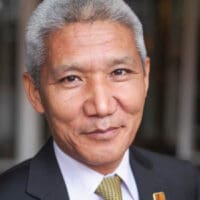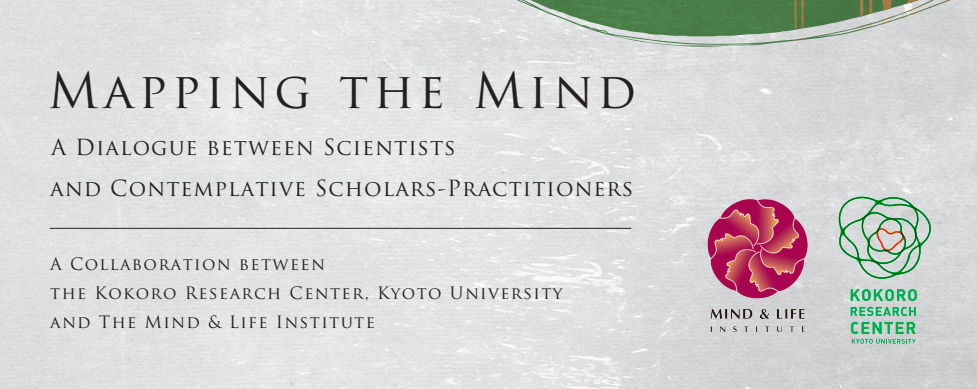Filmed during Mind & Life Institute’s “Mind and Life XXIX: Mapping the Mind” on April 12, 2014.
Cultural Neuroscience: Connecting Culture, Brain, and Genes
SPEAKER: Shinobu Kitayama
Cultural neuroscience is an emerging field of research that examines the interdependencies among culture, brain, and genes, with the ultimate goal of elucidating how the mind functions in varying socio-cultural contexts. By investigating both brain plasticity and genetic variability in differing societies and cultures, it seeks to overcome the nature-nurture dichotomy that has plagued social and behavioral sciences for so long. In the present talk, after a brief overview of the field, Kitayama illustrates its potential by reviewing evidence for cultural variations in brain mechanisms underlying cognition (e.g., holistic attention), emotion (e.g., emotion regulation), and motivation (e.g., choice rationalization). Further, Kitayama reports recent evidence on a gene x culture interaction effect in acquisition of cultural values. A well-validated cultural difference in independent vs. interdependent social orientation is much more pronounced for members of different cultures who carry dopamine receptor gene variants linked to high dopamine signaling capacity compared to non-carriers of such gene variants. Directions for future research will be discussed.
A Process-based Map of Compassion and its Implications on Compassion Training
SPEAKER: Roshi Joan Halifax
Compassion is considered to be the capacity to attend to the experience of others, to feel concern for others, to sense what will serve others, and potentially to be able to be of service. Compassion has been more simply defined as “the emotion one experiences when feeling concern for another’s suffering and desiring to enhance that person’s welfare.” Put another way, compassion is considered to have two main valences: the affective feeling of caring for one who is suffering, and the motivation to relieve that suffering. This is a conventional view of compassion and might not take into account a more nuanced perspective. This presentation explores a systems-based map of compassion that is nonlinear, context sensitive, practical, and amenable to training. This process-oriented map, developed initially for training medical professionals, characterizes compassion as an emergent process primed by non-compassion elements, including attention and affect, intention and insight, and embodiment and engagement. The map draws on neuroscience, social psychology, ethics, and contemplative perspectives. It is believed that this process-oriented map has the potential for impacting the training of compassion in clinicians as well as educators and others who engage in relationship-based service endeavors. The presentation also explores a unique intervention that can be used to cultivate compassion in the course of interpersonal interactions.
Implicit Mind, Sympathy, and Shared Reality
SPEAKER: Shinsuke Shimojo
There are certain socio-political problems that are unique to the modern, or so-called the First World, and are hard to resolve: war, poverty, crime, and depression, just to name a few. There are also certain aspects of the human mind that traditional “scientific” psychology and neuroscience have difficulty addressing (emotion, decision making, consciousness, and again depression, for example). Interestingly, these two sets of “new, hard problems” have some common features. Specifically, they are highly context-dependent and unpredictable. Neuropeptides such as oxytocin may provide a good example of such context-dependency. Reductionist scientists argue that oxytocin is a kind of “love hormone” which mechanically increases nursing and affiliative behavior. However, recent research shows that this is true only within an individual’s social group. The same chemical tends to trigger aggressive behavior against outsiders. Likewise, an individual’s personality and emotional decision-making should be understood in such a dynamic social context. In these cases, one needs to pay attention to the dynamic interactions between brain and the (social) world, via the body. Implicit mental processes plays a key role here. Can we understand social interactions at a more implicit somatic level, to strategically boost mutual liking and positive relationships? To this end, Shimojo reports our new findings on “implicit bodily movement synchrony” and “inter-brain neural synchrony.” Such interactions provide a behavioral and neural basis to establish “shared reality.” Facing various conflicts after the March 11 Fukushima Daiichi nuclear disaster in Japan, we need a more profound understanding of these implicit aspects of mind.
Group Discussion and remarks from His Holiness the 14th Dalai Lama
MODERATOR: Atsushi Iriki
INTERPRETER: Thupten Jinpa
PANELISTS:
Richard J. Davidson
Jay Garfield
Yoshiro Imaeda
Barry Kerzin (Venerable Tenzin Choerab)
Junko Tanaka-Matsumi
Shigefumi Mori
Makoto Nagao
Arthur Zajonc





